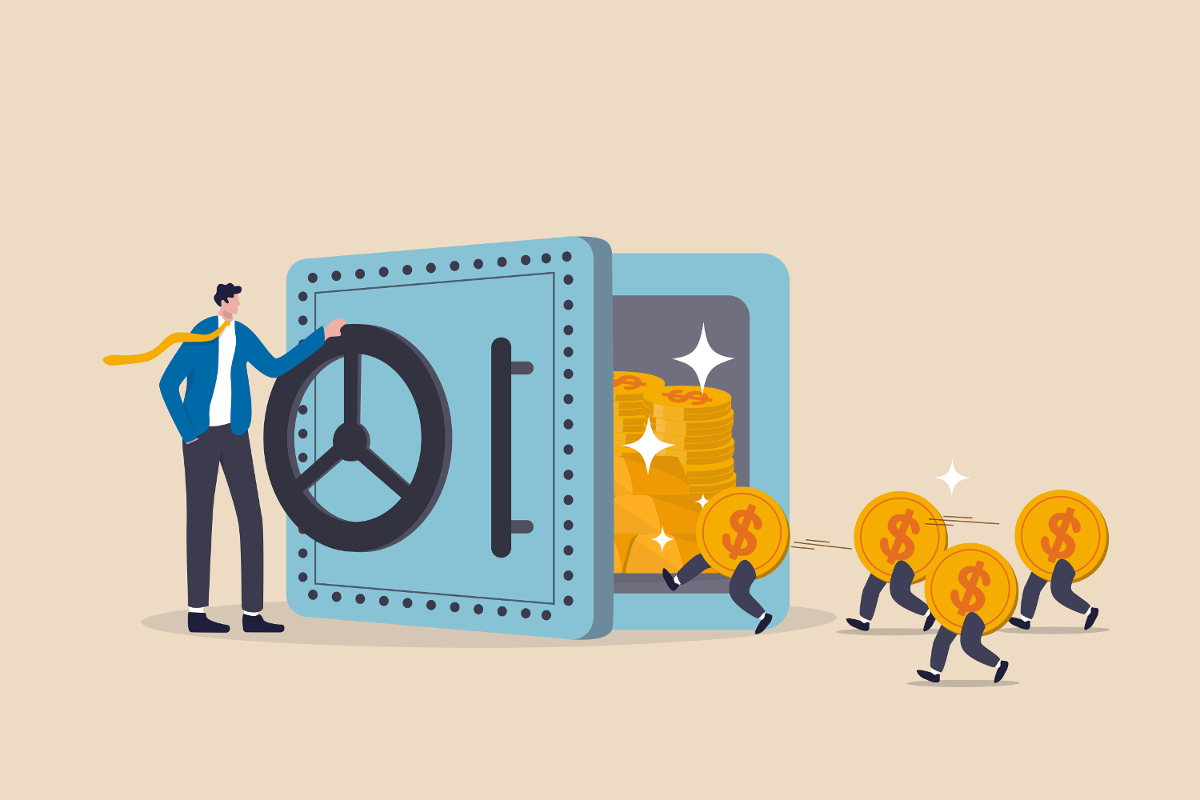What does it mean when a stock goes ‘ex-dividend’? As you’ll see in this brief guide, the ex-dividend date is an important part of the income investing — and, potentially the value investing — process. We explain what it means and why you should understand its impacts when buying stocks for both capital gains and dividend income.
If you’re new to income investing, you may think earning dividends from stocks you own is simple and straightforward.
In principle, it is; You buy shares in a profitable company that pays a portion of its earnings out as cash dividends to investors who’ve traded their capital for shares in the business.
I’ve personally been receiving income from some of my investments for years now.
I’ve seen first-hand how powerful a steady stream of dividends can be for your overall portfolio performance.
But understanding investment income is a little more complex than just buying and holding any stock that pays a dividend.
Here, we explain the finer points of dividend payments.
As you’ll see, the date a company pays out a dividend to shareholders is just one of the key dates you need to be aware of as an investor.
What Does It Mean When A Stock Goes Ex-Dividend?
There are four key dates around dividend payments.
The first is the declaration date. This is the date the company announces it will issue a cash dividend in the future.
Second, you have the record date. That’s the date the company goes through its list of shareholders to confirm those who are eligible to receive the upcoming dividend.
Third is the ex-dividend date.
This is an especially important one, as it determines which shareholders will be considered eligible on the record date.
The ex-dividend date is commonly set two days before the record date.
This means you must own shares in the company on or before that date in order to qualify for the upcoming dividend.
Finally, there’s the dividend payable date, or simply the payment date.
That’s exactly what it sounds like; the day the company pays out the dividend to the shareholders who’ve met the criteria to receive it.
Those are the four key stages of a dividend.
The ex-dividend date is arguably the most important because it’s the cut-off point for determining whether or not you will receive the next scheduled payment for your shares.
Is It Better To Buy A Stock Before Or After The Ex-Dividend Date?
In my opinion — and everything on our blog is opinion, it’s not financial advice — there’s no great advantage to buying before or after the ex-dividend date.
But that’s because I personally prefer to hold any shares I buy for a relatively long time.
If you’re looking for a quick cash gain, you may consider trying to buy shares in a stock right before the ex-dividend date.
On paper, that might not seem like a bad idea.
In reality, the market adjusts the stock price when a company trades ex-dividend. This takes account of the cash payment being made to shareholders.
Generally, the share price adjusts by the amount of the dividend, meaning if you buy right near the ex-dividend date and sell right after the dividend payable date, you could take a small capital loss despite having captured the income.
In other words, trying to dip in and out of a stock to grab the dividend may not work out as profitably as you’d hoped.
Even if that weren’t the case… and you could dip in and out of a stock quick and easy to claim some fast income, you’d still have fees and taxes to contend with, which would eat into your gains (see the full list of factors that impact your true portfolio performance).
Still, there probably are people out there who buy and sell around ex-dividend dates regardless of the downsides. So…
Are Ex-Dividend Dates Value Investing Opportunities?
I personally follow the value investing strategy set out by Benjamin Graham and, later, Warren Buffet.
I prefer to look for high quality companies trading below their true value.
If I find one of those, I’d rather buy shares and hold them for a (very) long time than trade frequently.
So, for me, an ex-dividend date isn’t necessarily an investment opportunity in itself.
But, if I calculate that this is a stock I want to own, I might look to get in before the ex-dividend date.
Having said that, since my investment strategy is a long term one, missing a single dividend payment by buying in after the ex-dividend date wouldn’t bother me one bit.
I’d be looking to hold (that’s stockspeak for ‘hodl’ if you’re joining us from the crypto world) those shares for many years, ideally capturing a long term capital gain plus the income the company pays out over that time.
But, that is just me. Not everyone invests the way I do (learn about my experience buying my first ever shares to see why I invest the way I do).
I hope this post has shed some light on ex-dividend dates, the process they’re part of, and the impacts they can have on both stock prices and investment income.

